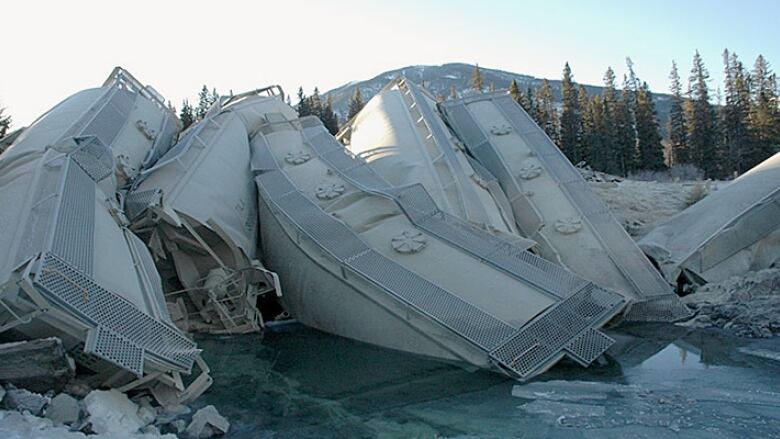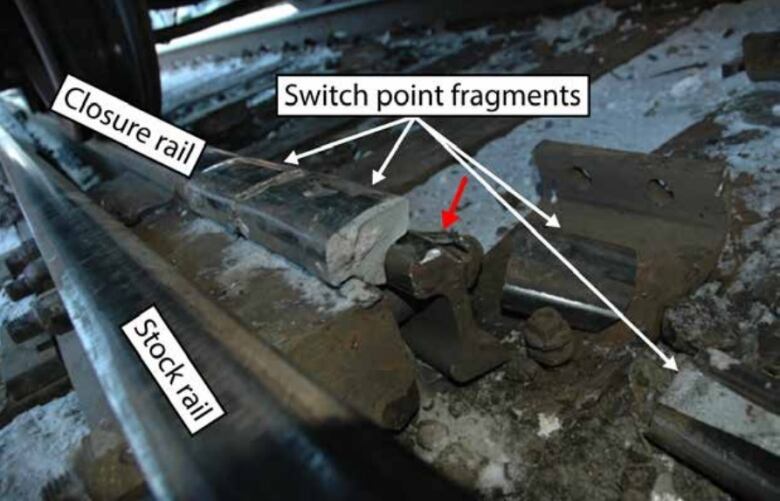Banff Boxing Day derailment blamed on loose and damaged portion of track
Crash sent 15 cars into a creek bed, spilling food products and fly ash into the water

A broken heel block in a CP Rail line that runs through Banff National Park is being blamed for the derailment that sent 15 train cars tumbling into a creek bed, spilling lentils, soybeans and fly ash into the water on Boxing Day 2014.
The Transportation Safety Board of Canada (TSB) released the results of its investigation into the derailment today, citing a fracture in the heel block assembly of the north switch-point rail as the main cause for the incident.
The section of track was inspected just three days before the derailment, according to the report.
- CP Rail derailment west of Banff sends cars into creek bed
- Banff derailment: spilled ash could suffocate fish eggs, environmental group says
- CP Rail train conductor speaks out on her firing after Banff derailment
"Although the regular, detailed, and visual track inspections were performed in compliance with regulatory and railway requirements, they did not specifically identify the deteriorating condition of the heel block assembly," the report reads.
The heel block was loose and had weakened over time in its joint under the weight of train traffic, the TSB found.

GlenPilon, aregionalinvestigator with the TSB, said the regulations surrounding rail-line inspections are being reviewed.
"What needs to happen is we need to take another look at the regulations to find out more detail and better ways to identify these issuesand whether than means increased inspections or more detailed inspections or change in the inspection process," he said.
Transport Canada has alsoasked the railway industry to come up with rules for better inspections and repairs of sections of track like the one involved in this incident.
No injuries were reported in the derailment, but one crew member did seek medical attention for inhalation of fly ash, a residue of coal combustion used to make concrete.
At the request of Parks Canada, CP Rail also built a temporaryelectric fence around the spill area to prevent bears and other wildlife from getting into the soybeans, which remained on site for months as crews dealt with the cleanup.












_(720p).jpg)


 OFFICIAL HD MUSIC VIDEO.jpg)
.jpg)



























































































